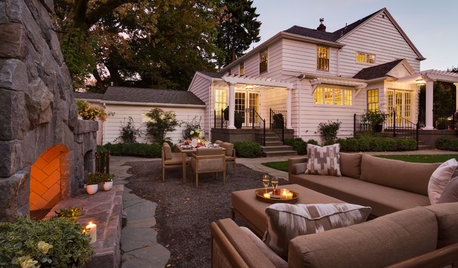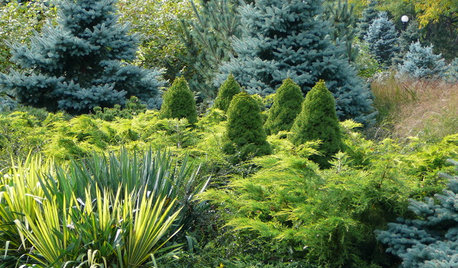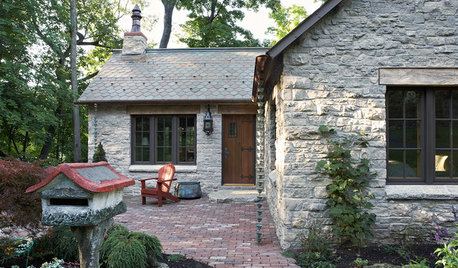No Pine Bark Fines to be found...what now?
amysrq
18 years ago
Related Stories

REMODELING GUIDESOne Guy Found a $175,000 Comic in His Wall. What Has Your Home Hidden?
Have you found a treasure, large or small, when remodeling your house? We want to see it!
Full Story
ACCESSORIESFound Objects: The Most Natural Decor of All
They're beautiful, plentiful and best of all, free. See how to turn surprise finds into uniquely personal displays
Full Story
GARDENING AND LANDSCAPINGHouzz Survey: See What Homeowners Are Doing With Their Landscapes Now
Homeowners are busy putting in low-maintenance landscapes designed for outdoor living, according to the 2015 Houzz landscaping survey
Full Story
KITCHEN DESIGNTrending Now: 25 Kitchen Photos Houzzers Can’t Get Enough Of
Use the kitchens that have been added to the most ideabooks in the last few months to inspire your dream project
Full Story
PLANTING IDEASDesigning With Conifers: Layers of Texture for Your Garden
Sharp and prickly or fine like ferns, richly textured conifers bring unexpected interest to the landscape
Full Story
BEFORE AND AFTERSSee 6 Yards Transformed by Losing Their Lawns
Wondering whether a turf lawn is the best use of your outdoor space? These homeowners did, and they found creative alternatives
Full Story
WOODKnotty and Nice: Highly Textured Wood Has a Modern Revival
Whether it's cedar, fir or pine, if a wood has a knot, it's hot
Full Story
REMODELING GUIDESYour Floor: An Introduction to Solid-Plank Wood Floors
Get the Pros and Cons of Oak, Ash, Pine, Maple and Solid Bamboo
Full Story
HOUZZ TOURSHouzz Tour: Fairy Tale Gatehouse in Minnesota
This cozy cottage in Minnesota blends fine antiques with reclaimed materials from bridge pilings, city streets and Midwestern barns
Full Story
FUN HOUZZDoes Your Home Have a Hidden Message?
If you have ever left or found a message during a construction project, we want to see it!
Full Story







username_5
jdwhitaker
Related Professionals
Brentwood Landscape Architects & Landscape Designers · Glendora Landscape Architects & Landscape Designers · Severn Landscape Architects & Landscape Designers · Bridgeport Landscape Contractors · Deer Park Landscape Contractors · Plainview Landscape Contractors · Vallejo Landscape Contractors · Irvington Landscape Contractors · North Hills Landscape Contractors · Chino Hills Solar Energy Systems · Lake Mary Solar Energy Systems · Detroit Window Contractors · Sarasota Window Contractors · Brea Fence Contractors · Olean Fence Contractorstapla (mid-Michigan, USDA z5b-6a)
jmhewitt
dvdgzmn
username_5
whynotsb
tapla (mid-Michigan, USDA z5b-6a)
amysrqOriginal Author
andy_e
tapla (mid-Michigan, USDA z5b-6a)
amysrqOriginal Author
tapla (mid-Michigan, USDA z5b-6a)
andy_e
tapla (mid-Michigan, USDA z5b-6a)
amysrqOriginal Author
bjs496
piri